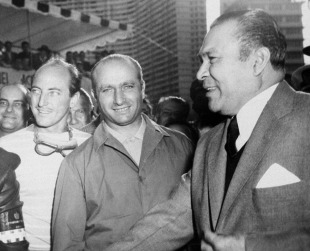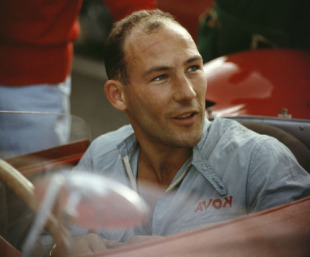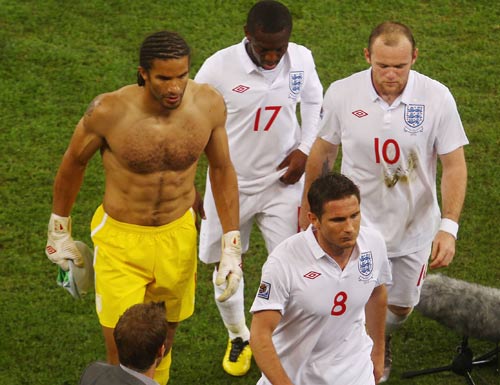
- Drivers:
- Ettore Chimeri
- |
- Juan Manuel Fangio
- |
- Masten Gregory
- |
- Roberto Mieres
- |
- Stirling Moss
- |
- Maurice Trintignant
In 1958 President Fulgencio Batista was trying to retain an air of normality in Cuba. Fidel Castro's guerrilla forces were camping in the mountains and rioters were becoming more aggressive in the streets, but in downtown Havana President Batista was keen for business to continue as usual.
Batista's vision was for Cuba's capital to become a Latino Las Vegas, where wealthy tourists from the United States would pump money into the country's casinos. And what better way to attract the the rich and frivolous than a motor race?
The first Cuban Grand Prix was held in 1957 and by all accounts it had been a great success, runnning along Havana's waterfront on the Malecon. Juan Manuel Fangio, the No.1 driver of the era, won the race in front of streets lined with enthusiastic and curious spectators. In 1958 a repeat event was scheduled, but with the revolution less than a year away things did not go so smoothly.
Fangio came back to defend his title and alongside him on the grid were a host of other big names, including Stirling Moss. The drivers approached the non-championship race as any other and the most famous were accommodated in the luxurious Hotel Lincoln in Central Havana. On the eve of the grand prix, Fangio walked into the lobby of the hotel on his way to dinner, only to be confronted by a young man in a leather jacket brandishing a pistol.
According to reports from the time, the slightly nervous assailant barked: "Fangio, you must come with me. I am a member of the 26th of July revolutionary movement." One of Fangio's friends picked up a paperweight and moved to throw it at the intruder, but the pistol jerked round. "Stay still," the kidnapper said. "If you move, I shoot." And with that Fangio accompanied the young man to a waiting car.
The motive was simple: by capturing the biggest name in motorsport the revolutionaries would show up the government and attract worldwide publicity to their cause. But despite the news spreading across the globe, Batista refused to be outdone and ordered the race to continue as usual while a team of police hunted down the kidnappers.
Moss was kept under guard throughout the night, with a watchman knocking on the door every three hours to make sure he was still in his bed. "It was a very disturbing night," he recalled. "Fangio told the rebels, `You mustn't take Stirling because he's on his honeymoon' - which was a lie of course, but nevertheless was very decent of him."
Fangio, meanwhile, was taking it all in his stride and was being treated to a slap-up meal of steak and potatoes before "sleeping like a blessed one" in a well-furnished apartment. Convinced that he was not in danger throughout the whole ordeal, he later admitted that he sympathised with his captors' actions: "Well, this is one more adventure. If what the rebels did was in a good cause, then I, as an Argentine, accept it."
As ordered by Batista, on the morning of the race the cars were fired up in front of a 150,000-strong crowd, with Maurice Trintignant filling in at Maserati for the missing Fangio. By this time the world champion had been offered a personal apology by Castro's man in Havana, Faustino Perez, and had even been supplied with a radio so that he could listen to the action. But Fangio was not in the mood. "I became a little sentimental," he said. "I did not want to listen because I felt nostalgic." It was just as well as Fangio's sentimental state of mind could have been pushed to the limit had he known what was happening on track.
The race got underway as normal, with Moss and fellow Ferrari driver Masten Gregory taking an early lead in what was expected to be a close fight. But by the time the leaders started their fifth lap, almost every corner of the 3.5-mile circuit was slick with oil and the cars started to run perilously close to the barriers. At first the organisers suspected a second act of rebel sabotage, but it was later discovered that Roberto Mieres' Porsche had a broken oil line.
On the next lap the inevitable happened. Local driver Armando Garcia Cifuentes lost control of his yellow and black Ferrari and went head-on into a bunch of spectators lining the circuit. Over 30 people were injured and seven killed as the wreckage took out a make-shift bridge and flew over the crash barriers. Porsche driver Ulf Noriden stopped on track and attempted to help: "I couldn't even see the Ferrari. The bodies were piled all over. I was wading in arms and legs."

Moss, unaware of the extent of the tragedy, continued racing against Gregory at the front of the field and went on to take one of the most bizarre victories of his career.
"I was driving around and the next thing I knew there had been an accident and a bridge had fallen down," Moss recalled in an interview with ESPN over 50 years later. "Well I say a bridge, it was more like a couple of bits of wood with ladders either side, but nevertheless the red flag was out and everybody started going slowly. At that time I was dicing for position with Masten Gregory, although we weren't really racing because you don't race at the beginning of a 500km grand prix. So he was in front for some of the way, then I was, then he was when the accident happened.
"We came onto the start-finish straight with him slightly ahead and I could see the finish line coming up, so I snuck it back into second, put my foot down and went past to take the win. When we stopped he wasn't too pleased and said, 'Now listen, I was in the lead all that time...' And I said, 'Well yes, but not when we passed the finish line'.
"I knew that the only person who could issue the red flag was the clerk of the course and he could never have waved it from the bridge, so that one had to be an unauthorised one - he could never have got there so fast from his usual position on the start-finish line.
"So I said to Masten, 'Look, keep quiet, we'll pool our [prize] money together and then split it'. And that's exactly what we did, because otherwise it would have gone to the organisers or whoever to decide and it would be years before we got the money.
"So officially I was the winner. The truth was either of us could have won it, but what the hell, it didn't matter. Why have an argument about it? Especially with everything else that had happened that weekend."
The whole event had been a disaster for Batista. When Fangio was handed over to the Argentine embassy soon after the race, worldwide headlines had been assured for Castro's revolutionaries and blame started to be apportioned. Cifuentes was charged with manslaughter while still fighting for his life in hospital and criminal charges were also filed against "person or persons unknown" for the kidnapping of Fangio.
Castro's revolution was successful over the New Year and it was not until 1960, at the Camp Columbia military airfield, that motor racing resumed in Cuba. The main event was won by Moss but it was again tainted, this time by the death of Ettore Chimeri who crashed his Ferrari through a barrier and plunged 150 feet into a ravine. He later died in hospital.
Over the following years organised motor racing ceased on the island. Despite its popularity, the sport was considered too bourgeois by the communist regime.
Laurence Edmondson is an assistant editor on ESPNF1
© ESPN Sports Media Ltd.
 Laurence Edmondson is deputy editor of ESPNF1 Laurence Edmondson grew up on a Sunday afternoon diet of Ayrton Senna and Nigel Mansell and first stepped in the paddock as a Bridgestone competition finalist in 2005. He worked for ITV-F1 after graduating from university and has been ESPNF1's deputy editor since 2010
Laurence Edmondson is deputy editor of ESPNF1 Laurence Edmondson grew up on a Sunday afternoon diet of Ayrton Senna and Nigel Mansell and first stepped in the paddock as a Bridgestone competition finalist in 2005. He worked for ITV-F1 after graduating from university and has been ESPNF1's deputy editor since 2010

